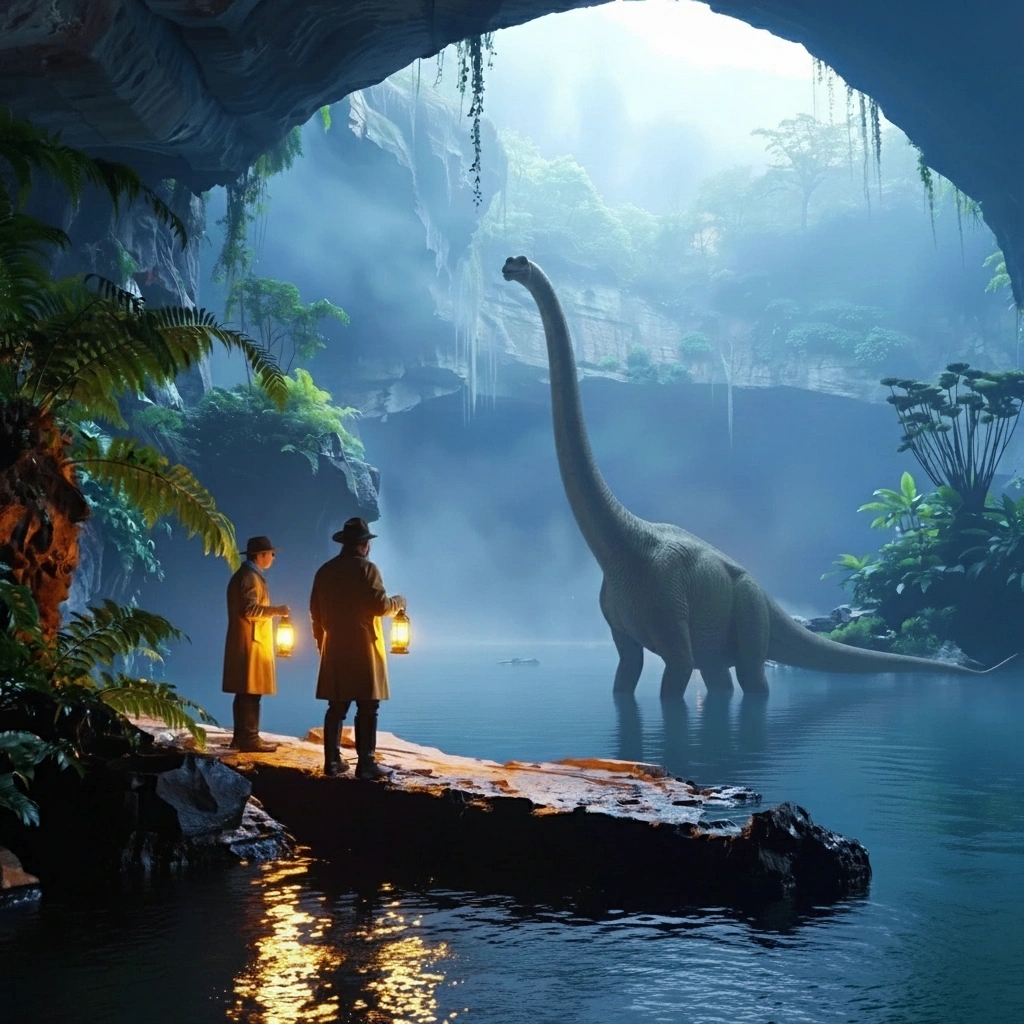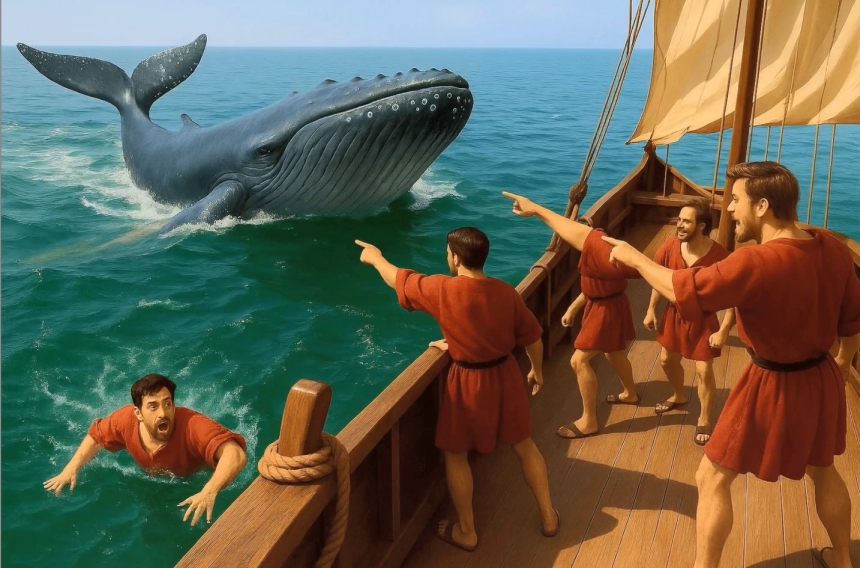For centuries, humans have looked up to the heavens in wonder. But a smaller, stranger group has looked in the opposite direction—deep below our feet—convinced that an entire world exists within the Earth itself. These are the believers in the Hollow Earth, one of history’s very strange pseudo-scientific legends.
Origins of an Inner World
The notion that the Earth might be hollow dates back long before modern science. Ancient myths from around the world hinted at subterranean realms: The Greeks spoke of Hades, a vast underworld beneath the crust where souls journeyed after death. In Hindu cosmology, the Patala was a luminous subterranean world inhabited by serpent beings called the Nagas. Some Native American tribes told of ancestors who emerged from deep inside the Earth, guided by spiritual forces. These legends inspired later thinkers who sought to combine myth and science into a single, if fantastical, cosmology.
In 1818, a retired U.S. Army officer named John Cleves Symmes Jr. publicly declared that the Earth was hollow and accessible through massive holes at the poles. He even petitioned Congress for funds to mount an expedition to the Arctic to locate these “Symmes Holes.” His followers took him seriously—enough that Symmes’ son and other devotees continued to promote polar expeditions for decades. While none found anything remotely resembling an entrance to the inner world, the legend stuck.
In the 20th century, Hollow Earth stories blended with other esoteric beliefs. The mythical underground realm of Agartha, long described in Theosophical writings, was said to be a spiritual utopia illuminated by an inner sun. Others connected it to the lost continents of Lemuria and Mu, suggesting that their survivors retreated underground when their lands sank.
The modern Hollow Earth theory can be traced back to 1692, when astronomer Edmond Halley-best known for Halley’s Comet- proposed that Earth might consist of a hollow shell surrounding concentric inner multiple hollow spheres between them, each with its own atmosphere and magnetic field. His idea was an early attempt to explain magnetic anomalies — but it was speculative, not supported by data. He wrongly theorized that these inner spheres might even support life and have their own magnetic poles, a hypothesis to explain the variations in Earth’s magnetic field. Though Halley’s concept was intended as scientific speculation, others ran with it—transforming it into a doorway to entire civilizations beneath the crust.
In the 19th and early 20th centuries, the theory evolved into a more imaginative narrative: a subterranean realm filled with lost civilizations, dinosaurs, and even advanced beings who controlled mysterious energies. Writers like Jules Verne, with Journey to the Center of the Earth (1864), helped mythologize the idea, blending fiction and supposed scientific plausibility.
Agartha: The Mythical Kingdom Beneath the Earth
For centuries, legends have spoken of a hidden world beneath our feet — a vast, illuminated realm called Agartha (also spelled Agharta or Agarttha). Said to lie deep within the Earth’s core, this legendary kingdom has captured the imaginations of mystics, explorers, and occultists alike. To believers, Agartha is not a myth but a lost civilization — a utopian empire ruled by ancient wisdom and advanced beings who watch over humanity from below.
Origins of the Agartha Legend
The idea of hidden subterranean realms stretches back thousands of years. Ancient Buddhist texts refer to Shambhala, a secret kingdom of enlightenment said to exist in or beneath the Himalayas. Hindu mythology also speaks of Patala, a beautiful underworld inhabited by serpent-like deities known as Nagas. Over time, these Eastern ideas blended with Western esoteric thought, forming the modern legend of Agartha.
The term Agartha itself gained popularity in the late 19th and early 20th centuries through writers such as Alexandre Saint-Yves d’Alveydre, a French occultist. In his 1886 book Mission de l’Inde en Europe, Saint-Yves described Agartha as a subterranean realm beneath Asia ruled by a hidden king — the “Sovereign Pontiff” — who governs a network of enlightened and wise masters guiding the destiny of nations. His writings connected Agartha with the concept of a global spiritual hierarchy, influencing later Theosophists like Helena Blavatsky. Later writers—most notably Ferdinand Ossendowski in his 1922 book Beasts, Men and Gods—claimed to have heard rumors of Agartha from Mongolian lamas, who spoke of an underground empire known as Shambhala or Agharti.These stories blended ancient Buddhist and Hindu cosmologies with Theosophical and esoteric traditions, painting Agartha as both a physical and spiritual center of the world. But for skeptics, the inconsistencies between these accounts immediately raise red flags.

The Hollow Earth Connection
In the 20th century, the Agartha myth merged with the Hollow Earth theory — the belief that the Earth is hollow and contains inner continents, oceans, and even a central sun. This idea was popularized by explorers such as John Cleves Symmes Jr. and Marshall B. Gardner, who proposed that large openings at the poles led into the Earth’s interior. Writers like Ferdinand Ossendowski, in his 1922 book Beasts, Men and Gods, claimed to have heard Mongolian lamas speak of a vast underground kingdom called Agharti. According to Ossendowski, its inhabitants possessed incredible technology and spiritual power, waiting for the day when surface humanity would be ready to receive their wisdom. These tales ignited public fascination and inspired countless expeditions and conspiracy theories linking Agartha to UFOs, Nazis, and lost ancient civilizations.
The Alleged Geography of Agartha
According to various accounts, Agartha is not a single city but an entire network of underground realms interconnected by vast tunnels stretching across the globe. Among its supposed cities are: Shambhala – the spiritual capital, a radiant city of peace and learning. Telos – said to lie beneath Mount Shasta in California, home to descendants of Lemuria. Posid – a remnant of Atlantis hidden below the Sahara Desert. Shonshe – a subterranean refuge beneath Tibet.Believers claim that the entrances to Agartha exist at the North and South Poles, beneath the Himalayas, and inside sacred mountains such as Mount Shasta and Mount Kailash. Some esoteric maps even depict Agartha’s tunnels linking every continent — a hidden network beneath human civilization.
Agartha in Popular Culture
From novels and movies to video games and esoteric literature, Agartha continues to inspire. It has appeared in works such as: “Journey to the Center of the Earth” by Jules Verne (a precursor to the idea of hidden worlds below ground), Theosophical writings and New Age channeling literature Anime and video games, such as Children Who Chase Lost Voices from Deep Below and Final Fantasy, and Modern conspiracy theories, linking Agartha to UFOs, ancient aliens, and secret government knowledge.
Skepticism and the Question of Agartha’s Existence
For over a century, the legend of Agartha—a hidden civilization said to exist deep within the Earth—has fascinated mystics, explorers, and conspiracy theorists alike. Often described as a vast subterranean realm illuminated by its own inner sun, Agartha is believed by some to be the home of an advanced race of beings, ancient masters, or even remnants of lost continents such as Lemuria or Atlantis. Yet despite the enduring allure of these tales, skepticism remains dominant among scientists and historians, who view Agartha as a purely mythological or symbolic concept rather than a physical reality.
Why Skeptics Debunk the Hollow Earth Theory
Few fringe theories have captured the public imagination quite like the Hollow Earth idea — the belief that our planet is not a solid sphere, but instead contains vast internal spaces or even entire civilizations beneath its crust. From the 18th-century speculations of Edmond Halley to the fantastical tales of Admiral Byrd’s supposed Antarctic “inner world” expedition, the Hollow Earth theory has been a persistent theme in science fiction and pseudoscience alike. Yet, despite its allure, skeptics and scientists alike have thoroughly debunked the concept using evidence from geology, physics, and direct observation. The evidence against a hollow Earth is overwhelming — from seismic readings and gravitational models to direct exploration and satellite imaging. To scientists, the Earth is a dynamic, layered planet with a molten heart and a solid crust — not an empty shell hiding lost worlds.
Seismic Evidence Shows a Solid Earth
One of the most decisive pieces of evidence against a hollow Earth comes from seismology — the study of how earthquake waves travel through the planet. When earthquakes occur, they release two main types of seismic waves: P-waves (primary) and S-waves (secondary). By observing how these waves travel and refract, scientists have mapped the internal layers of Earth — the crust, mantle, outer core, and inner core. If the Earth were hollow, these waves would behave very differently. Instead, they consistently show that Earth is made of dense materials, with distinct liquid and solid layers. There are no voids or massive hollow spaces anywhere within the planet.
Gravity Wouldn’t Work in a Hollow World
The laws of gravity also contradict the hollow Earth model. For a planet the size and mass of Earth, gravity’s pull requires a solid or at least continuously dense body. A hollow planet would cause gravitational forces inside it to behave unpredictably — objects near the “inner surface” would actually be pulled outward toward the surrounding shell, not held in place like on our surface. Moreover, satellite orbits and the behavior of Earth’s gravity field, which are precisely measured, align perfectly with a dense, solid planet model.
No Geological Mechanism Supports It
Geological processes such as plate tectonics, volcanic activity, and magnetism all rely on the movement of dense rock and molten material beneath the crust. If Earth were hollow, there would be no mechanism to create mountains, earthquakes, or a magnetic field. The geodynamo effect, which generates Earth’s magnetic field, depends on the movement of molten iron in the outer core — something impossible in a hollow structure.
No Openings or Hidden Entrances Exist
A popular feature of Hollow Earth lore is the claim that there are secret entrances at the poles — most famously the alleged “hole” at the North or South Pole, supposedly photographed by explorers or satellites. Skeptics point out that no such openings exist. Satellite imagery from NASA and independent space agencies has covered the poles extensively. The supposed “holes” in old photos are simply image artifacts, gaps in polar satellite coverage, or camera distortions from early mapping missions. Modern explorers, aircraft, and satellites have circled and flown over the poles thousands of times without observing any mysterious openings.
Further Scientific Grounds for Doubt including the Explorer Myths

From a geological standpoint, the existence of a habitable hollow Earth is impossible according to modern science. The Earth’s internal structure—confirmed through seismic wave analysis and geophysical modeling—shows a solid inner core surrounded by molten iron and rock, not open caverns capable of sustaining life. Temperatures near the core exceed 9,000°F (5,000°C), and the pressure is millions of times greater than that on the surface.
These extreme conditions make it physically impossible for advanced civilizations, cities, or sunlight-like sources to exist beneath the crust. No credible geological evidence—such as massive unexplored voids, entrances to vast underground worlds, or ancient artifacts—has ever been documented.
The Shaver Mystery and the Subterranean Race
Fast-forward to the 1940s, when pulp magazines were filled with tales of lost civilizations and alien visitors. In the pages of Amazing Stories, writer Richard Sharpe Shaver claimed that he had discovered evidence of ancient, evil beings—called Deros (detrimental robots)—living beneath the Earth. According to Shaver, these malevolent creatures used strange rays and telepathic devices to torment humanity from below. Though Shaver’s stories were framed as fiction, he and many readers insisted they were true accounts of hidden civilizations beneath our feet. The “Shaver Mystery” became a pop-culture sensation, merging UFO lore with the older Hollow Earth idea.
The Nazi Expeditions and Polar Entrances
Among the strangest offshoots of the Hollow Earth legend are claims that the Nazis conducted secret expeditions to Antarctica to locate an entrance to the inner world. According to conspiracy lore, German occultists believed that an ancient, technologically advanced race—the Vril or Aryan ancestors—still lived beneath the polar ice. Though historians have found no credible evidence of such missions, the myth persists, often blending with UFO theories and post-war tales of Nazi bases hidden in Antarctica.
Admiral Byrd’s Lost Diary
Another cornerstone of modern Hollow Earth mythology is the story of Admiral Richard E. Byrd, the famous American polar explorer. A forged “secret diary,” circulated decades after his death, claims that Byrd flew into a hidden opening at the North Pole in 1947 and encountered an advanced inner-Earth civilization that warned humanity to stop its nuclear testing. The document, of course, is a hoax—but its influence on Hollow Earth and UFO subcultures has been enormous. It links the legend with the idea of benevolent subterranean beings watching over humanity.
Throughout the 20th century, rumors circulated that famous explorers such as Admiral Richard E. Byrd had flown into openings at the poles and encountered inner-earth civilizations. However, these claims stem from forged diaries and fictionalized accounts that surfaced long after Byrd’s death. Historians have since verified that Byrd’s actual flight logs make no mention of inner-earth encounters or lost cities. The story of Admiral Richard E. Byrd supposedly flying into an inner world in 1947 is based on a forged diary that surfaced decades after his death — containing language and details inconsistent with Byrd’s real journals. Likewise, supposed “inner earth” photographs, testimonies, and YouTube “expeditions” are often digitally fabricated or based on fictional accounts treated as literal truth. Skeptics emphasize that while these tales are entertaining, they lack verifiable evidence.
Similarly, alleged maps showing “tunnels” to Agartha or “polar openings” have been traced to hoaxes or misinterpretations of satellite imagery. Modern polar expeditions and satellite scans have revealed no evidence of such entrances. Moreover, the Hollow Earth myth emerged during an era of exploration and imperialism, when large parts of the world remained unmapped.
Today, scientific exploration leaves little room for mystery regarding the Earth’s interior. Seismic tomography—essentially “ultrasound for the planet”—maps the layers of the Earth in detail, proving there are no massive hollow regions. Deep cave systems, though extensive, reach only a few miles down, and the deepest human-made borehole—the Kola Superdeep Borehole in Russia—descends just over seven miles, revealing nothing but superheated rock.
To geologists, Agartha and other hollow earth abodes is not a question of being unproven—it is physically impossible within the known laws of physics and planetary formation. For scientists and skeptics, the evidence overwhelmingly places Agartha and other hollow earth places in the realm of fiction and symbolism.


